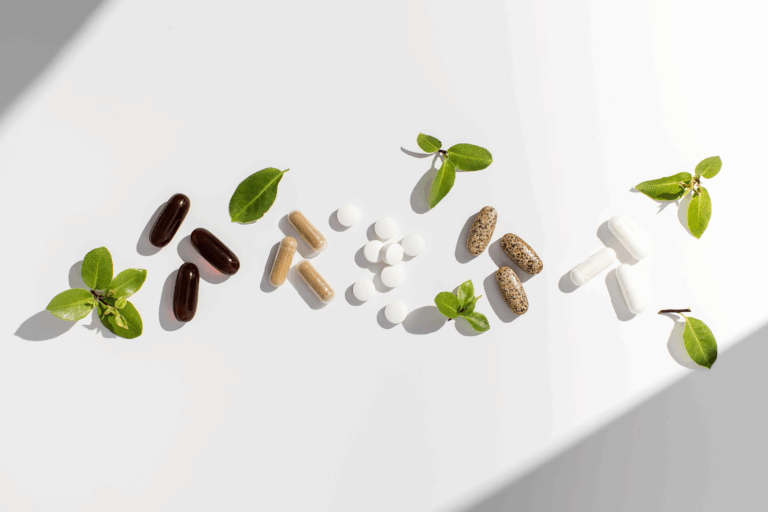Part 5: Immune System Series | Nutrition is Essential for a Healthy Immune System
Summary
Inadequate nutrition compromises the immune system. Good nutrition provides a healthy balance of antioxidants, micronutrients, and other components that supports immune system function.
Nutrition plays an essential role in supporting the immune system by providing direct and indirect factors for the complex immune response.1-2 Without good nutrition, the weakened host would be potentially subject to more infections from pathogenic organisms. Research has documented that there are many nutrients that impact the ability of the immune system to mount an effective response. In addition, there are interdependent nutrient interactions that drive the immune response positively or negatively.3
Tolerance, inflammatory control, and responses to normal mucosal bacteria are interrelated and linked to specific immune mechanisms. Some nutrients act as antioxidants and cofactors at the level of cytokine regulation. Chronic undernutrition, including insufficient intake of energy, and micronutrient deficiencies compromise the cytokine response and affect immune cell trafficking. Undernutrition combined with infection creates even greater challenges to the immune system leading to altered immune responses and cellular populations, and an increase in inflammatory mediators. While many clinicians do not see much frank nutrient deficiency, research has clearly shown that the immune system can be significantly impacted by nutrient deficits.
Nutritional Antioxidants Prevent Collateral Damage
Antioxidants are needed to protect tissue from damage due to the production of free radicals during the inflammatory process. The need for antioxidants is essential for either acute or chronic inflammation.4-5 A balance between reactive oxygen species formation, free radical production, and endogenous antioxidant defense mechanisms is needed to avoid tissue damage to DNA, proteins, and membrane lipids.
In addition to the traditional antioxidants found in the diet such as vitamin E and vitamin C, carotenoids (lycopene and beta-carotene), plant polyphenols, and resveratrol, there are less well known antioxidants.6-7 Gallic acid (3,4,5-trihydroxybenzoic acid) is a powerful phenolic antioxidant naturally found in foods and herbs. Gallic acid inhibits mast cell-derived inflammatory allergic reactions by blocking histamine release and pro-inflammatory cytokine expression.8 Gallic acid is present in most plants and exhibits bioactivity as an antioxidant, antimicrobial, anti-inflammatory, neuroprotective, and anti-cancer agent.9-10
| Free Radicals | Reactivity |
| Superoxide anion | Generated in mitochondria, cardiovascular system, and other cell types |
| Hydrogen peroxide | Formed in the human body by a large number of reactions and yields potent reactive species |
| Hydroxyl radical | Highly reactive; generated during iron overload and such conditions in the human body |
| Peroxyl radical | Reactive; forms lipids, proteins, DNA, and sugar molecules during oxidative damage |
| Nitric oxide | Neurotransmitter associated with blood pressure regulation; yields oxidants during pathological stress |
| Peroxynitrite | Highly reactive; formed from nitric oxide and superoxide |
| Ozone | Present as an atmospheric pollutant; reacts with various molecules |
Plant-derived phenolic compounds have been shown to inhibit the initiation and progression of cancers by modulating genes regulating key physiologic processes, such as oncogenic transformation of normal cells, growth and development of tumors, and angiogenesis, and metastasis. Pre-clinical research with plant-derived phenolic compounds on cancer cell death have shown down-regulation of transcription factors NF-κB and NRF2 (nuclear factor erythroid-2 related factor), which regulate the expression of antioxidant proteins that protect against oxidative damage triggered by injury and inflammation.
In addition, plant-derived phenolic compounds down-regulate oncogenic survival kinases such as protein kinase B (Akt) and phosphoinositide 3-kinases (PI3k), cell proliferation regulators that include extracellular signal-regulated protein kinase (Erk1/2), D-type cyclins, and cyclin dependent kinases, histone deacetylases, and angiogenic factors vascular endothelial growth factor (VEGF), fibroblast growth factor receptor 1 (FGFR1), and macrophage inhibitory cytokine (MIC-1). In addition to inhibiting oncogenic proteins, phenolic compounds elevate the expression of tumor suppressor proteins, p53, p10, p21, and p27.11
Micronutrients: Integrated Roles in Supporting the Immune System
Micronutrients such as vitamin E and selenium have been shown to work together increasing antibody titers, lymphocyte proliferation, and antiviral antibodies in animals. A deficiency of vitamin E and selenium can result in a decrease in cytolytic T lymphocyte activity and proliferation, impaired thymus and lymph node integrity, and decreased neutrophil phagocytic activity. Additionally, vitamin E and vitamin A have been shown to enhance neutrophil function.3
Magnesium May Reduce Chronic Inflammation
A meta-analysis and systematic review indicated that dietary magnesium intake is inversely associated with serum C-reactive protein levels.12-13 The authors indicated that the potential beneficial effect of magnesium intake on chronic diseases may be, at least in part, explained by inhibiting inflammation. Researchers have also reported that higher intakes of magnesium are associated with lower risk of metabolic syndrome.14 The best sources of magnesium from the diet are legumes, nuts, seeds, fish, and whole grains.15
Amino Acids May be Essential in Cellular Immunity
Amino acids are the building blocks of all protein. A diet that contains the essential amino acids is necessary for life. Data from the third National Health and Examination Survey (NHANES), a US National Survey, indicated that higher intakes of the amino acid arginine were associated with lower levels of c-reactive protein.16 The authors suggested that individuals may be able to lower their risk for cardiovascular disease by consuming more arginine-rich foods such as nuts and fish. During severe metabolic stress, including sepsis and surgery, another amino acid, glutamine, is typically depleted from muscle stores and is considered to be “conditionally essential” in these conditions.17 Additionally, glutamine has an important role in cell-mediated immunity and maintains the integrity of the intestinal mucosa.18 Protein-rich foods like beef, chicken fish, dairy products, beans, and many other foods are good food sources of glutamine. Recently, glutamine was reported to inhibit micro RNA-23 in animals, thereby protecting myocardial function from ischemia/reperfusion injury.19
Omega-3 Fatty Acids Actively Direct Resolution of Inflammation
The role of dietary omega-3 fatty acids eicosapentaenoic acid (EPA, 20:5n3), docosapentaenoic acid (DPA, 22:5n3), docosahexaenoic acid (DHA, 22:6n3), and their oxygenated derivatives are emerging as key factors in the active and sequential resolution of inflammation and physiological repair of tissues. Dietary EPA and DHA have been recognized as important modulators of the inflammatory process by shifting the cyclooxygenase-stimulated production of prostaglandins, thromboxanes, and leukotrienes from arachidonic acid (AA, 20:4n6) cell-signaling intermediates to the less-inflammatory omega-3 intermediates.
However, the understanding of genetic, molecular, and cellular mechanisms has led to a new paradigm of science called resolution pharmacology. Research has identified a superfamily of unique stereospecific mediators of inflammation resolution named resolvins or specialized pro-resolving mediators. The resolvins derived from EPA (E-series; RvE1, 2, 3), DHA (D-series;RvD1, 2, 3, 4), and AA (lipoxins; LX) have been shown in numerous pre-clinical settings to not only orchestrate the self-limiting inflammatory process, but also support repair of tissue affected by inflammation.20-22 There are other important mediators as well:
- Proteins and peptides that reduce inflammation (e.g., adrenocorticotropic hormone, annexin A1, short peptides, chemerin)
- β-galactoside binding proteins that have anti-inflammatory effects (i.e. galectin-1)
- Autocoids (e.g., adenosine, a nucleoside formed by the enzymatic activity of 5’-nucleotidases on intracellular ATP, ADP, and AMP)
- Gases (H2S and CO)
All of these mediators collectively share fundamental properties to terminate the initial inflammatory reaction and organize the “cleaning phase” within the affected tissue in an effort to return to homeostasis.20
The bioactivity identified with the formation of resolving mediators includes the inhibition of granulocyte trafficking, removal of monocytes, promotion of granulocyte cell death (apoptosis), augmentation of phagocytosis and subsequent clearance of cellular debris, and the activation of macrophage class switching (M1 to M2), resulting in a macrophage that can repair physiology and also promote tissue regeneration and repair.20,22
However, side effects of many of the therapeutic anti-inflammatory approaches may lead to negative consequences such as immunosuppression, toxicity to tissues, and compensation by the body leading to tolerance of the therapy and reduced effectiveness. A pro-resolving strategy with pro-resolving molecules may be the desired therapeutic approach of the future, and would deliver actions already “optimized” by nature.20 There are many therapeutic agents that are in various stages of research using the pro-resolving therapeutic approach for a variety of health conditions including type 2 diabetes, dry eye syndrome, gingival inflammation, and pain receptivity via D series resolving receptors in patients with osteoarthritis pain.23-24
There is evidence that lymph nodes produce 17-DHEA, which enhances antibody production. In addition, other D series resolvins have been characterized in other lymphoid tissues in mice such as the spleen. These observations suggest that the pro-resolving mediators, in addition to returning tissue to homeostasis, may also play a positive role in supporting acquired immunity.25-26
The aging process dysregulates D and E series resolvin activity in modulating cardiosplenic and cardiorenal function following myocardial infarction in experimental animals.27-29 Resolvin dysregulation may also be a factor in age-associated neurodegenerative conditions such as Alzheimer’s disease.30 As the formation of resolvins from dietary precursors is reduced with aging, this may signal the need for a direct supplement of resolvins to support dietary intake.
Nucleotides Support Immune Function in Adults and Healthy Infants
Nucleotides are the building blocks of DNA and RNA and play key roles in many biological processes. They serve as nucleic acid precursors, physiological mediators, components of coenzymes, and sources of cellular energy.31 A nucleotide consists of a base of either cytosine, thymine, or uridine (known as pyrimidines) or adenine and guanine (known as purines), plus a molecule of pentose sugar and one or more phosphate groups.
Sources of nucleotides include de novo synthesis, recovery via salvage mechanisms, and dietary intake of normal foods, particularly meats. Nucleotides, found in normal diets, have been determined to be required for normal immune competence, intestinal development, and recovery. They may be considered “conditionally essential” in periods of rapid growth, or in the presence of regulatory or developmental factors, which interfere with full expression of the endogenous synthetic capacity.31-34 In adults fed enteral diets containing nucleotides, immune function was improved compared to a nucleotide-free diet. In addition, post-operative cancer patients fed a nucleotide formula had reduced infectious complications and reduced length of hospital stay compared to the nucleotide free diet.35
Rapidly proliferating tissues, such as in the immune system or the intestine, may not be able to fulfill the needs for cell nucleotides exclusively by de novo synthesis. When demand exceeds the ability of the body to synthesize nucleotides, the tissues can utilize the salvage pathway recovering nucleosides and nucleobases from blood and diet, and then make additional nucleotides.36 Dietary nucleotides influence lymphocyte maturation, activation, and proliferation, and affect the lymphocyte population in both the small intestine and blood. Additionally, nucleotides are involved in support of the innate immune response by enhancing macrophage phagocytosis and delayed hypersensitivity as well as allograft and tumor responses.
Prospective randomized trials in infants fed formula supplemented with nucleotides at the level found in human milk (bound and free nucleotides; 72mg/L) demonstrated that humoral immunity was enhanced, compared to infants fed control formula with no added nucleotides. Specifically, in the first year of life, infants had higher humoral vaccination response (poliovirus type 1 neutralizing antibody) when given infant formula with nucleotides.37-38 Nucleotide supplemented formulas also provided a better antibody response to immunization with Haemophillus influenza vaccine, diphtheria toxoid, and oral polio vaccine and fewer episodes of diarrhea.39 Additionally, infants were evaluated for cellular immunity and the cohort fed infant formula supplemented with nucleotides had increased memory/effector T-cell populations and changes in natural killer (NK) cell subtypes compared to infants fed unfortified formula.40 The shift in maturation and immunoregulatory subsets of the group fed the nucleotide formula had similar results as those fed human milk.
Read part 6 of the Immune System Series: MicroRNA Non-Protein Coding Sequence.
- De Rosa, V., Galgani, M., et al. (2015). Nutritional control of immunity: balancing the metabolic requirements with an appropriate immune function. Seminars in Immunology 27(5): 300-309.
- Hosomi, K., Kunisawa, J. (2017). The specific roles of vitamins in the regulation of immunosurveillance and maintenance of immunologic homeostasis in the gut. Immune Netw 17(1): 13-19
- Kubena, K. S., McMurray, D.N. (1996). Nutrition and the immune system. Journal of the American Dietetic Association 96(11): 1156-1164.
- Milenkovic, D., Jude, B., et al. (2013). miRNA as molecular target of polyphenols underlying their biological effects. Free radical biology & medicine 64: 40-51.
- Arulselvan, P., Fard, M.T., et al. (2016). Role of antioxidants and natural products in inflammation. Oxidative Medicine and Cellular Longevity 2016: 5276130.
- Basu, P., Maier, C. (2016). In vitro antioxidant activities and polyphenol contents of seven commercially available fruits. Pharmacognosy Res 8(4): 258-264.
- Hidalgo, G. I., Almajano, M.P. (2017). Red fruits: extraction of antioxidants, phenolic content, and radical scavenging determination: a review. Antioxidants (Basel) 6(1).
- Fei, X., Je, I.G., et al. (2017). Synthesis of gallic acid analogs as histamine and pro-inflammatory cytokine inhibitors for treatment of mast cell-mediated allergic inflammation. Molecules 22(6).
- Daglia, M., Di Lorenzo, A., et al. (2014). Polyphenols: well beyond the antioxidant capacity: gallic acid and related compounds as neuroprotective agents: you are what you eat! Current pharmaceutical biotechnology 15(4): 362-372.
- Fernandes, F. H., Salgado H.L. (2016). Gallic acid: review of the methods of determination and quantification. Crit Rev Anal Chem 46(3): 257-265.
- Anantharaju, P. G., Gowda, P.C., et al. (2016). An overview on the role of dietary phenolics for the treatment of cancers. Nutrition journal 15(1): 99.
- Moslehi, N., Vafa, M., et al. (2012). Effects of oral magnesium supplementation on inflammatory markers in middle-aged overweight women. Journal of Research in Medical Sciences : The Official Journal of Isfahan University of Medical Sciences 17(7): 607-614.
- Dibaba, D. T., Xun, P., et al. (2014). Dietary magnesium intake is inversely associated with serum C-reactive protein levels: meta-analysis and systematic review. European journal of clinical nutrition 68(4): 510-516.
- Sarrafzadegan, N., Khosravi-Boroujeni, H., et al. (2016). Magnesium status and the metabolic syndrome: A systematic review and meta-analysis. Nutrition 32(4): 409-417.
- Canada, D.O. (2016). Food sources of magnesium. Retrieved from https://www.dietitians.ca/Your-Health/Nutrition-A-Z/Minerals/Food-Sources-of-Magnesium.aspx.
- Wells, B. J., Mainous, A.G., et al. (2005). Association between dietary arginine and C-reactive protein. Nutrition 21(2): 125-130.
- Kim, H. (2011). Glutamine as an immunonutrient. Yonsei medical journal 52(6): 892-897.
- Dos Santos, R., Viana, M.L., et al. (2010). Glutamine supplementation decreases intestinal permeability and preserves gut mucosa integrity in an experimental mouse model. Journal of parenteral and enteral nutrition 34(4): 408-413.
- Kou, Y., Zheng, W.T., et al. (2016). Inhibition of miR-23 protects myocardial function from ischemia-reperfusion injury through restoration of glutamine metabolism. Eur Rev Med Pharmacol Sci 20(20): 4286-4293.
- Perretti, M., Leroy, X., et al. (2015). Resolution pharmacology: opportunities for therapeutic innovation in inflammation. Trends in pharmacological sciences 36(11): 737-755.
- Serhan, C. N., Dalli, J., et al. (2015). Protectins and maresins: new pro-resolving families of mediators in acute inflammation and resolution bioactive metabolome. Biochimica et Biophysica Acta (BBA) – Molecular and Cell Biology of Lipids 1851(4): 397-413.
- Serhan, C. N. (2017). Discovery of specialized pro-resolving mediators marks the dawn of resolution physiology and pharmacology. Mol Aspects Med Article in Press.
- Weylandt, K. H., Chiu, C.Y., et al. (2012). Omega-3 fatty acids and their lipid mediators: towards an understanding of resolvin and protectin formation. Prostaglandins Other Lipid Mediat 97(3-4): 73-82.
- Huang, J., Burston, J.J., et al. (2017). Targeting the D series resolvin receptor system for the treatment of osteoarthritis pain. Arthritis & Rheumatology 69(5): 996-1008.
- Ramon, S., Gao, F., et al. (2012). Specialized proresolving mediators enhance human B cell differentiation to antibody-secreting cells. Journal of immunology 189(2): 1036-1042.
- Dalli, J., Winkler, J.W., et al. (2013). Resolvin D3 and aspirin-triggered resolvin D3 are potent immunoresolvents. Chemistry & biology 20(2): 188-201.
- Gangemi, S., Pescara, L., et al. (2005). Aging is characterized by a profound reduction in anti-inflammatory lipoxin A4 levels. Experimental gerontology 40(7): 612-614.
- Arnardottir, H. H., Dalli, J., et al. (2014). Aging delays resolution of acute inflammation in mice: reprogramming the host response with novel nano-proresolving medicines. Journal of immunology 193(8): 4235-4244.
- Halade, G. V., Kain, V., et al. (2016). Aging dysregulates D- and E-series resolvins to modulate cardiosplenic and cardiorenal network following myocardial infarction. Aging (Albany NY) 8(11): 2611-2634.
- Dyall, S. C. (2015). Long-chain omega-3 fatty acids and the brain: a review of the independent and shared effects of EPA, DPA and DHA. Frontiers in aging neuroscience 7: 52.
- Carver, J. D. (1999). Dietary nucleotides: effects on the immune and gastrointestinal system. Acta Paediatrica 88: 83-88.
- Uauy, R. (1989). Dietary nucleotides and requirements in early life. Textbook of gastroenterology and nutrition. E. Lebenthal. New York, Raven Press: 265-280.
- Schaller, J. P., Buck, R.H., et al. (2007). Ribonucleotides: conditionally essential nutrients shown to enhance immune function and reduce diarrheal disease in infants. Semin Fetal Neonatal Med 12(1): 35-44.
- Hess, J. R., Greenberg, N.A. (2012). The role of nucleotides in the immune and gastrointestinal systems: potential clinical applications. Nutrition in clinical practice : official publication of the American Society for Parenteral and Enteral Nutrition 27(2): 281-294.
- Van Buren, C. T., Kulkarni, A.D., et al. (1994). The role of nucleotides in adult nutrition. The Journal of Nutrition 124(1 Suppl): 160S-164S.
- Gil, A. (2002). Modulation of the immune response mediated by dietary nucleotides. European journal of clinical nutrition 56 Suppl 3: S1-4.
- Pickering, L. K., Granoff, D.M., et al. (1998). Modulation of the immune system by human milk and infant formula containing nucleotides. Pediatrics 101(2): 242-249.
- Schaller, J. P., Kuchan, M.J., et al. (2004). Effect of dietary ribonucleotides on infant immune status. part 1: humoral responses. Pediatric research 56(6): 883-890
- Gutierrez-Castrellon, P., Mora-Magana, I., et al. (2007). Immune response to nucleotide-supplemented infant formulae: systematic review and meta-analysis. The British journal of nutrition 98 Suppl 1: S64-67.
- Buck, R. H., Thomas, D.L., et al. (2004). Effect of dietary ribonucleotides on infant immune status. Part 2: Immune cell development. Pediatric research 56(6): 891-900.
- Serhan, C. N., Chiang, N., et al. (2015). Lipid mediators in the resolution of inflammation. Cold Spring Harbor perspectives in biology 7(2): a016311.







